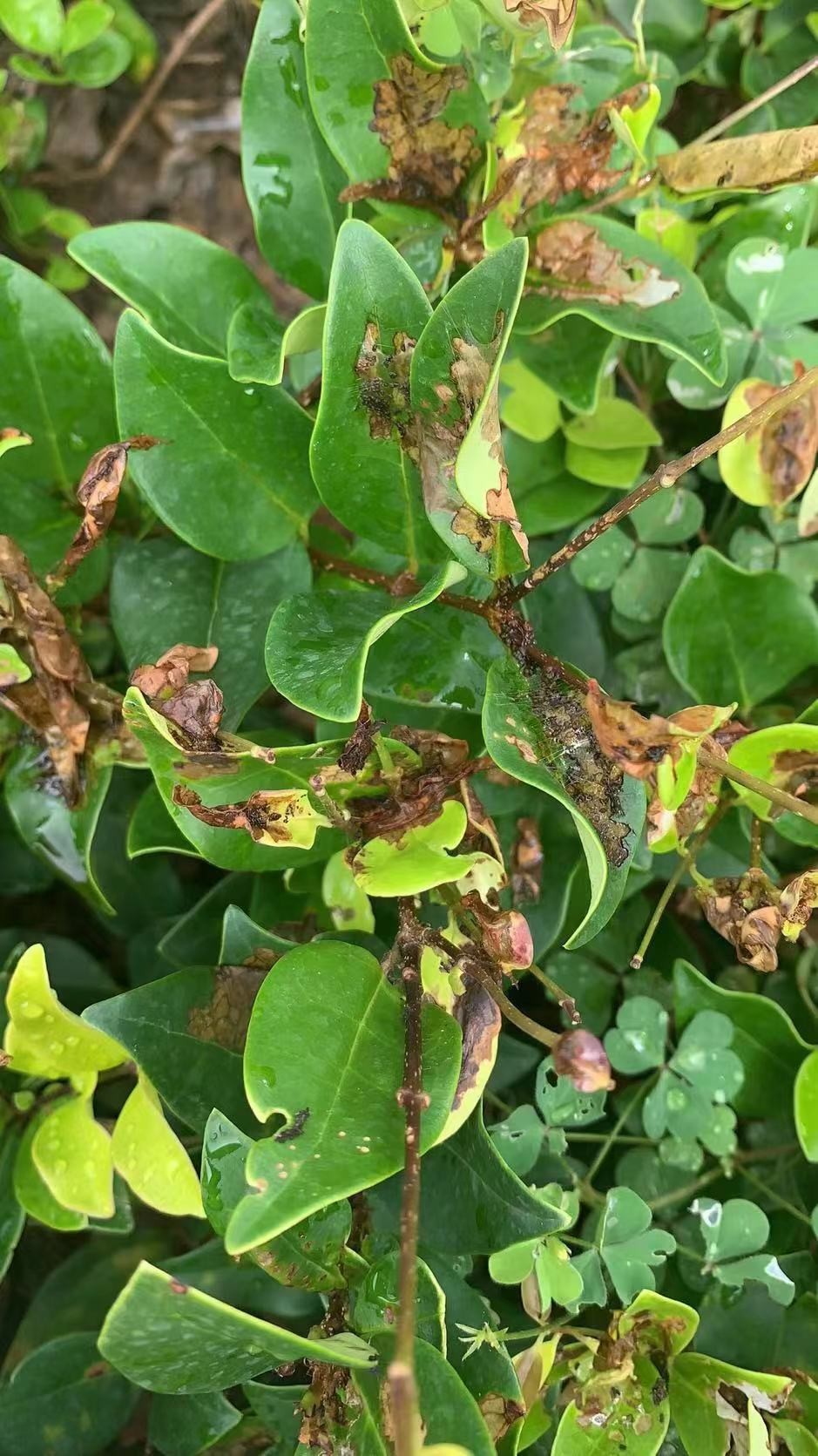Privet is a small shrub of the genus Privet in the family Pyrophyllaceae, the main branches and leaves are tight and round, and are often planted in the garden for ornamentation, which is an important hedge material for landscaping, and is also an excellent tree species for making bonsai. However, for the cultivation and maintenance of the privet, we also need to understand the relevant diseases and pests and control technologies, of which leaf-eating pests are an important category, and the harm is often the most obvious and intuitive!
【1】Privet Ball:
Adult larvae of Privet spheroids can harm Privet leaves. Adults are generally hidden on the back of the leaves, not easy to find, through its chewable mouthpiece to feed on the old and new leaves, forming irregular, different sizes, uneven inner edges of incomplete perforations on the leaves, and often connected into pieces. They can also harm the leaf buds, causing the leaf buds to break and the growing leaves to break and deform.
【2】Privet Leaf Jumping Armor:
Chrysomelidae. Mainly harmful to the leaves of the golden leaf Privet, adult insects feed on the leaves, resulting in the appearance of round or irregular small spots on the leaves, the larvae sneak under the skin, drill out of the curved worm path under the epidermis, destroy the chloroplast structure, weaken photosynthesis, make a large number of leaves scorched and affect the green landscape effect.
【3】Yellow ring silk beard borer:
The yellow-ringed silk borer is a new pest on the privet of the leaflet, which seriously harms the leaves of the privet, causing the plant to wither and die, and also endangering the golden leaf privet. The insect occurs in three generations per year in the Hengyang area of Hunan Province, and the overwintering adults and the first and second generations of adults appear in late April, late May and late June, respectively. The first and second generation larvae are in full bloom in early May and early June, respectively, and the most harmful.
【4】Key points of integrated control of leaf-eating pests in privet:
1. In daily management and maintenance, improve the ventilation and light transmittance of plants through pruning and other measures, and reduce the incidence of pests;
2. When a small amount of pest damage is found, the insect leaves are removed and destroyed in time, and the Qilin Royal Moth is combined with 200 kg spraying with water for extermination and prevention.
